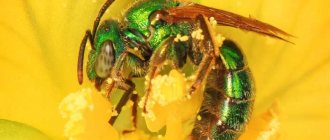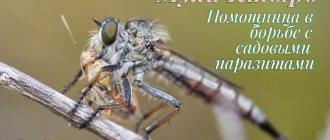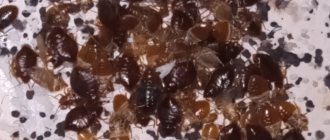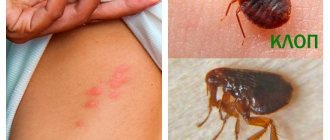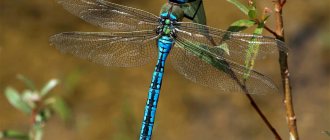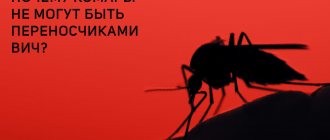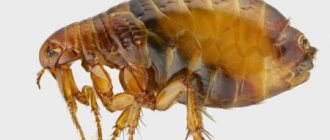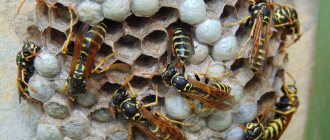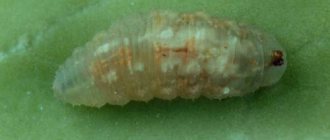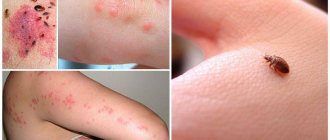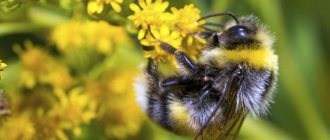Fly bites are a problem for people of any age and gender. This insect is one of the most common throughout the world. Its active period is from April to October. Despite the fact that many people consider flies to be completely harmless insects, when they bite, they can cause serious harm to a person. The main danger lies in the likelihood of infectious lesions. Therefore, you need to know how to help yourself and your loved ones.
Diversity of Diptera
About 5,000 species of flies are known. Among them:
- home;
- black;
- deer;
- green;
- burner;
- horseflies;
- tsetse;
- humpback;
- sandy
But only some of them can bite a person. In Eurasia this is the autumn fly and horsefly, in Africa it is the tsetse fly. Dangerous species of dipterous insects include black and horse flies.
Home
House flies can be seen in any home - from country houses to city apartments. These insects have a yellow or grayish body, with 4 black stripes on the back. They are dangerous carriers of more than 25 bacterial diseases.
In males, the life cycle lasts 12-14 days, in females – up to 30 days. They feed on debris, food, and decaying organic components.
Black
The black fly is considered one of the most common. It is distinguished by its small body size - 7-9 mm, having a bluish-black or greenish color. The larvae turn into adults in 10-14 days.
Black flies eat dead carcasses, live in open wounds of animals, and also around garbage containers. The period of their activity occurs in the spring and autumn months, the duration of the life cycle is 50-70 days.
Deer
Moose or deer flies are insects with large sizes, reaching 12-14 mm. Their wings are decorated with ornate patterns in golden or chocolate brown. A biting deer fly is dangerous not only for pets, but also for people. Females feed on the blood of humans or livestock, males on pollen of plants and flowers.
You can get a fly bite while walking near bodies of water, in swamps, or flower meadows. They are very dangerous, because insects are carriers of serious diseases - for example, tularemia.
Tularemia is accompanied by severe headaches, dizziness, a sharp increase in body temperature, and the appearance of ulcers on the skin. Antibacterial therapy helps stop the disease, which without treatment is fatal.
Green
The green fly is a greenish-bronze colored insect, its body is covered with shiny, glossy scales. Most often it feeds on dung, carrion, and likes to live in open wounds or on piles of garbage. Typically, these insects do not enter a person’s home, preferring to settle outside.
Zhigalka
The burner fly is very similar to the house fly. They bite very painfully and can even bite through clothing. They feed on the blood of farm animals, pets, and people.
Livers bite only during the daytime; at night their activity decreases. Their bites lead to a decrease in milk production, irritability, and aggressiveness of animals. Insects love to settle in mown grass, wet straw, and droppings.
Horseflies
The gadfly, whose bite is very painful, is a large insect up to 20 mm in size. The belly is orange or yellow, the wings are grayish. Most often, horseflies live on the banks of rivers and other bodies of water, and on farms.
Horseflies breed on decaying organic matter. Females feed on the blood of humans and animals. Their bites are very painful and bleed for a long time. Gadflies are carriers of leukemia, tularemia, and anthrax.
Bees, bumblebees, wasps and hornets
When the first insect attacks, its sting remains in the wound. The bee dies. The bites of such creatures are accompanied by sharp pain and swelling, which lasts from several hours to 2 days. But they are quite useful. Bee venom has healing properties. The bites of these creatures are dangerous if they strike the mucous membranes.
“We are still friends”: Derevianko commented on the breakup with his wife
Smooth and fresh skin: dermaplaning, or why a woman needs to shave her face
Rare shot: Viktoria Isakova showed her grown-up daughter from Yuri Moroz (new photo)
If a bee attacks, you must carefully remove the sting with tweezers. Treat the affected area with a solution of ammonia or ethanol or hydrogen peroxide, cool the skin. The victim should drink plenty of fluids. If an allergy occurs, take an antihistamine and consult a doctor.
Bumblebees do not leave a sting in the wound when they bite. And, unlike bees, they can attack humans repeatedly.
Wasps also do not leave a sting under the skin and can attack several times.
Hornet attacks are especially dangerous. Their bites are painful. And they can cause severe allergies.
The symptoms of stings from bumblebees, wasps and hornets are almost the same as the consequences of a bee attack.
First aid is provided in the same way.
When and why do they bite?
Flies can feed on human blood, which is why they bite. During the bite, the insect drinks a significant dose of blood, and its level of pain corresponds to approximately 80 mosquito bites.
The site of injury may bleed for a long time. Most often, blood appears after contact with deer flies or horse flies. If the bleeding cannot be stopped using folk remedies or pharmaceuticals, you should immediately seek medical help.
In most cases, a person or animal is bitten by females who need blood to breed offspring. Males can feed on flower nectar and plant pollen.
Horseflies and gadflies
The first insects are active in hot weather, when human skin is moistened with sweat or water (for example, after swimming). Horseflies bite very painfully. Their saliva is toxic and irritates the skin, causing itching, swelling, and redness.
Gadflies are parasites. They lay eggs in the body tissues of animals and humans. If the female decides to leave her offspring under the skin, she pierces the place chosen for this. The bite is accompanied by severe swelling and redness.
Lost weight: what Sofia Tarasova sacrificed for the sake of “VIA Gra” (new photos)
"Dad is offended." Agata Muceniece about her relationship with Priluchny after the divorce
The money tree pleases with lush flowering: my secret is in caring for the leaves
If attacked by a gadfly or horsefly, wash the skin thoroughly with soap. Cool it and eliminate the swelling using available means. If an allergy occurs, contact a medical facility.
Bite symptoms
Every person knows what a fly bite looks like and how painful it is. A few hours after the injury, a red lump and swelling appears on the skin.
Other signs:
- swelling at the site of skin damage, which, depending on the type of insect, reaches 5-8 cm;
- the fly bite may remain pale and not redden;
- After injury, inflammatory changes in the skin quickly develop.
If the insect was a carrier of pathogenic microorganisms, the clinical picture of the bite appears faster and the symptoms are more intense. The bite site should not be scratched, otherwise the wound may become infected.
Horseflies or spiders
This group includes 3 dozen species of blood-sucking flies. They sting incredibly painfully and attack travelers aggressively, surrounding the person in a cloud. There are commonly encountered species, and there are more rare ones.
Red-whiskered horsefly or blinding lacewing (Chrysopsinae)
A large fly, almost 3 cm, we prefer areas near water bodies. Only females bite, sucking 0.2 ml at a time. They need biological fluid to lay eggs. Males have enough nectar from flowers.
The bullfly is 2 times larger than the previous biter.
“Sailor”, or deer horsefly, is small, striped, very vicious, bothering animals and people.
Horseflies find victims hundreds of meters away and flock together to feast. If people are driving in a car, then insects will fly into the open window, even if the car is moving 70 km/h! By attacking the driver, the pest can even provoke an accident. It will land on your face and other open areas, continuously stinging. And if you stop, then hundreds of flying flies cannot be driven out of the cabin or crushed.
Horseflies prefer black. This should be taken into account when choosing an outfit for a walk. They attack anything black, and if they fail to bite, they will leave a continuous layer of sticky excrement.
Healthy. It is better not to crush insects, as they will squirt viscous contents. It is better to tear off the head of the bloodsucker and give the dead insect to the ants for food.
Natural enemies regulate the size of natural populations.
Natural enemies of horse flies:
- birds that eat insects;
- predatory insects larger than horseflies (dragonflies);
- spiders that weave strong webs.
But they cannot destroy them, so travelers or farm owners will have to save themselves and their animals from the attacks of these flying vampires. Horses, cows or deer have only two ways to defend themselves: the tail or branches of bushes or trees. Therefore, pets should be protected using repellents.
Why is a fly bite dangerous?
During a bite, the insect injects special enzymes into the human blood that inhibit the process of blood clotting. They cause severe allergic reactions, redness, and swelling of the skin.
Injuries resulting from contact with dipteran insects are itchy and itchy, but should not be scratched. This increases the likelihood of infection. Parents need to ensure that children do not scratch damaged areas of skin.
Insects are often carriers of dangerous pathogens, which, along with saliva, enter the bloodstream. This leads to infection, sepsis, polio, anthrax, and other equally dangerous diseases.
Autumn flies
Stomoxys calcitrans. Externally, biting flies are very similar to common flying insects. And after their painful attacks, confusion arises as to whether house flies bite. There are differences in appearance, but they can only be noticed after careful consideration, these are:
- widely spaced wings;
- dark stripes on the back, located longitudinally.
Complications of allergies
One of the main complications after insect damage to the skin is an allergic reaction. It often leads to urticaria, anaphylactic shock, angioedema and even death. If you are prone to allergies, the use of antihistamines is mandatory.
Many travelers visiting African countries encounter tsetse flies. The consequences of her bite are much more serious, since she suffers from sleeping sickness. Its danger lies in the fact that it develops over 3-5 years, so a person may not associate the manifested illness with travel.
Danger from proximity to flies
In addition to being repulsive, these insects can cause health problems. The harm caused to a person depends on the lifestyle of a particular species or method of subsistence.
Main types of hazards from flies:
- spread of infectious intestinal diseases - flying from feces, animal corpses, garbage bins to human food, flies carry on their bodies the causative agents of cholera, dysentery, toxic infection, typhoid fever, eggs and larvae of various helminths. They also contaminate food products with their own feces and belching;
- infection with eye infections (trachoma, conjunctivitis) - by eating secretions from the eyes of a sick creature and annoying a healthy one, they infect it;
- By biting, flies eat blood, sweat, mucus secreted by the human body, thereby contributing to the formation of wounds that hurt, itch or become very inflamed;
- transmission of polio, tularemia, tuberculosis, anthrax, myiases of tissues or cavities, adenoviral, staphylococcal infections;
- food spoilage;
- nuisance plus infection of domestic animals;
- other.
Small, but ever-penetrating, fast-flying parasites can become a real disaster, because the speed of their reproduction is amazing, as is the ability to cover tens of kilometers in a day, landing on everything.
Overseas “bandits” and their danger to humans
Science knows more than 5,000 species of flies that inhabit almost all known Asian and tropical countries. They are considered more dangerous than their European "brothers". The danger to humans lies not only in their particular morbidity, but also in the transmission of severe bacteriological and infectious diseases.
Tsetse
The tsetse fly is one of the most dangerous insects that transmit dangerous infections. It lives in some tropical regions of Africa. Settles in tree roots, wet foliage, and jungle thickets. Males and females feed on the blood of people and animals.
The consequences of tsetse fly bites are extremely dangerous to human health and life. They cause African sleeping sickness. Its symptoms:
- the appearance of red dots or lumps at the site of the bite;
- active inflammatory process at the point of contact with the insect;
- headaches, dizziness;
- chills;
- cerebral edema;
- confusion in coordination of movements and consciousness.
In the most severe cases, the victim develops a coma, which often ends in death.
There is no medical drug to prevent African sleeping sickness.
Sandy
Sand flies live in Thailand. These are small blood-sucking flies that can be seen on sandy beaches. They bite their victims in August-September, and the bites are absolutely painless, reminiscent of mosquito bites.
The place of contact with sand insects is characterized by gradually developing itching and burning, but they cannot be scratched. Also, the saliva of flies often causes an allergic reaction.
Gorbatka
Humpbacks are blood-sucking insects that entered Russia from Turkey, along with oranges and other tropical fruits. It can be identified by its characteristic external features - active jumps during flight and a hump on its back.
Adult uninfected individuals do not harm humans, but when purchasing exotic fruits there is a possibility of infection with larvae. Humpback whales often act as carriers of such dangerous diseases as cholera.
How to protect yourself from flies?
There is a legend that these flies bite only at dawn and dusk. My experience shows that they are active all day long. Even in the sunshine, sitting in the shade or walking along the water's edge, you can meet evil females. To protect yourself, use repellents. Although they don't always help. It is better to use organic sprays with citronella and lemongrass.
Some people find that a thick layer of coconut oil helps. This makes it more difficult for flies to reach the skin through the sticky obstacle. Alternatively, use suntan oil with SPF. And it protects from the sun, and the flies don’t bite. Apply oil after every bath. Sea and fresh water also help protect against sand flies. They don't bite while you're swimming. As soon as the skin starts to dry out, the flies are right there.
First aid after a fly attack: pharmacy and folk remedies
Many people who have encountered insects are interested in what to do in case of fly bites and how to prevent serious consequences. After contact with a horsefly or autumn fly, you need to provide first aid to the victim.
Basic measures:
- The damaged area should be washed with plenty of running water.
- The wound must be treated with brilliant green, hydrogen peroxide or any other antiseptic.
- To reduce the inflammatory process, drugs with anti-inflammatory effects are used - for example, Fenistil or Lokoid.
On a note! Most often, fly bites do not have serious consequences. But they become the causes of severe allergic reactions with complications such as Quincke's edema and anaphylactic shock. To avoid them, the victim must take an antihistamine - Diazolin, Suprastin, Loratadine, Zodak.
Ticks
They are quite dangerous because they are carriers of pathologies. After a walk in the forest, you should examine your skin, especially exposed areas of the body. If a person notices a tick, it is better to entrust the removal of the insect to a medical professional. If round red spots appear on the skin within 7-10 days after the bite, the victim should consult a doctor. This sign may indicate infection with Lyme disease.
Compliance with precautions and timely provision of first aid in case of a bite will allow you not to spoil your summer holiday and avoid the dangerous consequences of an encounter with insects.
Found a violation? Report content
Features of treatment in children
In young children, fly bites, especially multiple bites, cause serious allergic reactions. To avoid them, after detecting damage, you must immediately give the child an antihistamine - Diazolin, Loratadine, Zodak, Eden.
On a note! Any antihistamine has age restrictions, so only a doctor should select it.
In case of redness and inflammation of the skin, you need to apply an anti-inflammatory ointment to the bite site - Bepanten, Panthenol, Rescuer.
Nifurtimox or Eflornithine is used as a specific antidote after contact with flies.
What to do if bitten by a fly?
You can quickly eliminate pain, redness, inflammation and itching using a variety of means. Scratching the wound is fraught with infection and other unpleasant complications. To treat a fly bite you must:
- Treat the affected area with hydrogen peroxide - you can use any disinfectant;
- Eliminate itching - special ointments, creams or gels will help with this;
- Taking an antihistamine is necessary to prevent allergic reactions in time.
The danger of a fly bite cannot be underestimated. If the affected area is very swollen or festering, with severe pain or a strong increase in temperature, you should consult a doctor. Timely diagnosis by a specialist will help determine or refute the presence of an infectious disease.
Fly bites are especially unpleasant in children. Kids lead active lifestyles and often neglect protective measures against insects (for example, staying away from landfills, garbage cans, or certain pets). Children's skin is very thin, so flies can bite even through clothing. The most important thing when detecting a bite in a child is to eliminate the itching. The baby can scratch the wound too much and cause an infection. Medical products intended for children will help cope with this problem.
You can protect yourself from insects using a number of effective measures. The simplest and most common are fumigators and mosquito nets. When planning a picnic in nature, do not forget about repellents. Special sprays or ointments for adults and children guarantee reliable protection against various insects.
A wide range of protective products against flies is available on our website. With us you can choose the ideal substance that will take care of your health.
African tryponosomiasis, or sleeping sickness.
For residents of Russia, there is no danger of contracting this disease, since on our continent, and indeed on others, there is no tsetse fly. The situation is worse among travelers and representatives of charitable organizations who have been brought to Central Africa. Considering the poor development of medicine in these areas, as well as the lack of a vaccine and specific drugs against sleeping sickness, a tsetse fly bite can end very sadly.
The situation is a little simplified by the fact that not all insects are carriers of trypanosomes, and transmission of the pathogen occurs mainly through the bite of a fly. In rare cases, sleeping sickness can also be transmitted:
- through blood transfusions or organ transplants from an infected donor,
- from an infected mother to her child during pregnancy or childbirth.
Symptoms of African trypanasomiasis are specific and usually appear three days to several weeks after the bite of an infected tsetse fly and may include:
- a painful chancre (small ulcer) in the area of the infected tsetse fly bite,
- heat,
- headache and severe muscle pain,
- rash,
- swelling of the face,
- enlarged lymph nodes,
- weight loss.
In rare cases, there is an enlarged spleen, problems with the kidneys, and heart. Neurological symptoms such as sleep disturbances, poor coordination, confusion and behavioral changes develop over several weeks to months after the initial infection. If left untreated, the infection is usually fatal within weeks or months.
Most cases of incidence are found in eastern and southern Africa - in Malawi, Tanzania, Uganda, Zambia, as well as in central Africa and in some areas of the western part of the continent. In most cases these are Angola, Central African Republic, Chad, Democratic Republic of the Congo, Republic of the Congo, Sudan and Uganda.
So, how can you protect yourself from a terrible deadly disease if you really want to go to Africa? There are several methods and conditions that can help reduce the risk of infection. First of all, you should avoid tsetse fly bites, and to do this you need to remember the following:
- Areas with high concentrations of tsetse flies should be avoided.
- Clothing should be long sleeves, long trousers tucked into pants, boots or boots (not sandals) and a hat, preferably with a mosquito net.
- Tsetse flies can bite through light fabric, so when choosing clothing, preference should be given to heavier, denser materials.
- Tsetse flies are attracted to bright and dark colors, so you should wear light-colored clothing or shades that blend neutrally with the environment.
- Repellents can only offer limited protection against tsetse flies. However, it's not a bad option to take on, also because the areas where sleeping sickness is most common tend to have other insect-borne diseases, such as malaria and dengue fever.
- Vehicles should be inspected for tsetse flies before entering them, as the insects are attracted to movement and dust from moving vehicles.
- In areas where sleeping sickness is rampant, blood transfusions and organ transplants should be avoided unless it is an emergency.
- If you still need to receive a blood transfusion or organ transplant while traveling, it is advisable to insist that doctors test the donor materials to ensure that they are free of sleeping sickness pathogens.
- Symptoms of sleeping sickness appear at least after several months, so upon returning home you should definitely conduct research for the presence of the causative agent of the disease.
Do flies bite? Most people will answer in the affirmative. But not everyone suspects that only certain species do this. Insects are especially active in late summer and autumn. People explain this phenomenon by the rapid death of insects. This statement is incorrect, the reason is completely different.
Means of control and prevention
To defeat small, fast, voracious insects that exceed the prey in quantity and speed, a number of measures should be taken:
- Airtightness of the room (mesh on windows, doors).
- Use of adhesive tapes, insecticides, repellents.
- Regular disinfection and use of folk remedies.
Proven folk remedies include the use of green repellers. These are wormwood, geranium, bird cherry, currant, tansy or castor bean. Plants can be planted around the house, indoors in flowerpots.
Ultrasonic repellers that are inaudible to people, wiping window frames with a vinegar solution and herbal decoctions help.
